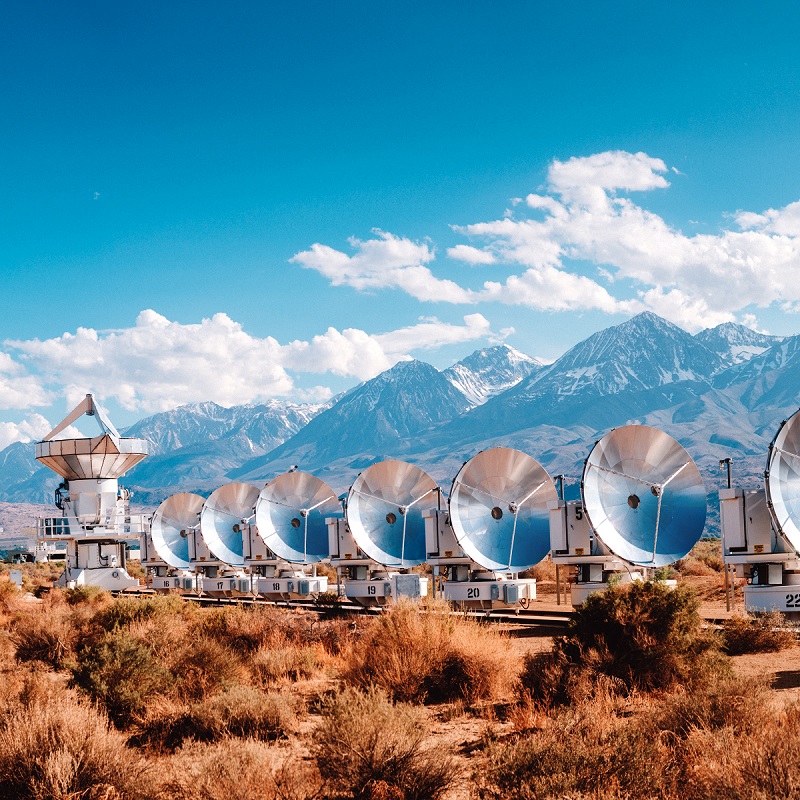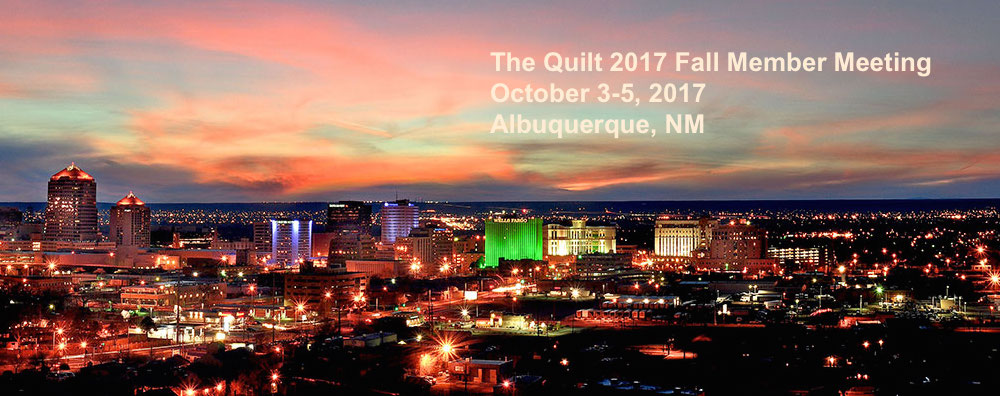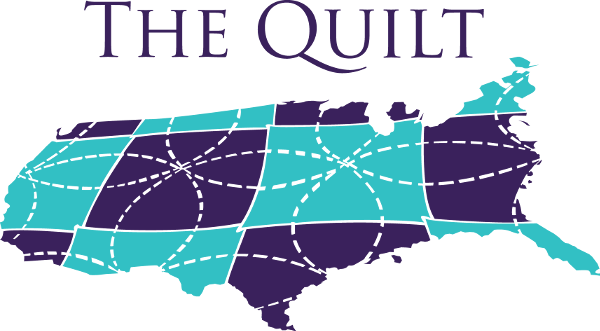What’s News
Blog
R&E networks could help better identify national broadband gaps
Consumer sourcing and leveraging R&E networks to become Collaborative Networked Organizations, or CNOs, to manage the collection of broadband availability data could improve the quality and accuracy of the information, according to comments submitted to the NTIA...
Find out what was trending this year at #QuiltinSoCal
The Quilt returned to the La Jolla Shores Hotel and La Jolla Beach and Tennis Club in California on Feb. 6-8 for its 2018 Winter Member Meeting. Let’s see what was trending this year … [View the story "2018 Quilt Winter Meeting" on Storify]
R&E networks ready for Winter Member Meeting in La Jolla
The Quilt will be returning to the La Jolla Shores Hotel and La Jolla Beach and Tennis Club in California on Feb. 6-8 for its 2018 Winter Member Meeting. Overview The Quilt will be holding its annual Winter Member Meeting at our traditional venue in La Jolla. We are...
R&E Networks deliver high performance, open access to information
In its December 14, 2017 meeting, the Federal Communications Commission (FCC) voted to roll back provisions that prevent Internet Service Providers from blocking or slowing particular parts of the Internet in favor of others. This is the concept known as “net...
#QuiltinABQ Recap: Trending conversations from 2017 Fall Member Meeting
Thank you for joining us in Albuquerque for the 2017 Fall Member Meeting. Building on the success of the colocation of Fall 2015 and 2016 events, this year’s Fall Member Meeting also coincided with the National Science Foundation Campus Cyberinfrastructure and...
2017 Fall Member Meeting sets sights on ABQ
Our 2017 Fall Member Meeting is only a few weeks away, and we have a great program lined up for Quilt members, affiliates and guests inside the Hyatt Regency – Downtown Albuquerque on Oct. 3-5 in New Mexico. At the invitation of our Quilt member, the University of New...
Humans and technology intersect at NRP Workshop
The first National Research Platform (NRP) Workshop is happening next month and The Quilt is excited and looking forward to discussing and learning more about our potential role in developing a national big data superhighway. The NRP workshop will be held at Montana...
MCNC’s Mark Johnson joins FCC’s Broadband Deployment Advisory Committee Working Group
The Quilt, a national coalition of advanced U.S. regional networks for research and education (R&E), and MCNC, the non-profit owner and operator of the North Carolina Research and Education Network (NCREN), today announced that MCNC Chief Technology Strategist...
The Quilt offers guidance on NSF cyberinfrastructure future plans
The National Science Foundation (NSF) has made cyberinfrastructure a central theme in its plans for developing and delivering tools to enhance scientific discovery. This year, between January and April, the NSF sought input from the research community on science...
The Quilt recommends MCNC’s Mark Johnson to FCC advisory committee
The Quilt has nominated MCNC Chief Technology Strategist Mark Johnson to serve on the Federal Communication Commission’s new Broadband Deployment Advisory Committee (BDAC) as a representative of the national research and education (R&E) networking community. In...

The Quilt in the Field
R&E networks could help better identify national broadband gaps
Aug 17, 2018
Consumer sourcing and leveraging R&E networks to become Collaborative Networked Organizations, or CNOs, to manage the collection of broadband availability data could improve the quality and accuracy of the information, according to comments submitted to the NTIA...
Find out what was trending this year at #QuiltinSoCal
Feb 13, 2018
The Quilt returned to the La Jolla Shores Hotel and La Jolla Beach and Tennis Club in California on Feb. 6-8 for its 2018 Winter Member Meeting. Let’s see what was trending this year … [View the story "2018 Quilt Winter Meeting" on Storify]
R&E networks ready for Winter Member Meeting in La Jolla
Feb 2, 2018
The Quilt will be returning to the La Jolla Shores Hotel and La Jolla Beach and Tennis Club in California on Feb. 6-8 for its 2018 Winter Member Meeting. Overview The Quilt will be holding its annual Winter Member Meeting at our traditional venue in La Jolla. We are...
R&E Networks deliver high performance, open access to information
Dec 11, 2017
In its December 14, 2017 meeting, the Federal Communications Commission (FCC) voted to roll back provisions that prevent Internet Service Providers from blocking or slowing particular parts of the Internet in favor of others. This is the concept known as “net...
#QuiltinABQ Recap: Trending conversations from 2017 Fall Member Meeting
Oct 13, 2017
Thank you for joining us in Albuquerque for the 2017 Fall Member Meeting. Building on the success of the colocation of Fall 2015 and 2016 events, this year’s Fall Member Meeting also coincided with the National Science Foundation Campus Cyberinfrastructure and...

2017 Fall Member Meeting sets sights on ABQ
Sep 20, 2017
Our 2017 Fall Member Meeting is only a few weeks away, and we have a great program lined up for Quilt members, affiliates and guests inside the Hyatt Regency – Downtown Albuquerque on Oct. 3-5 in New Mexico. At the invitation of our Quilt member, the University of New...
Humans and technology intersect at NRP Workshop
Jul 25, 2017
The first National Research Platform (NRP) Workshop is happening next month and The Quilt is excited and looking forward to discussing and learning more about our potential role in developing a national big data superhighway. The NRP workshop will be held at Montana...
MCNC’s Mark Johnson joins FCC’s Broadband Deployment Advisory Committee Working Group
May 22, 2017
The Quilt, a national coalition of advanced U.S. regional networks for research and education (R&E), and MCNC, the non-profit owner and operator of the North Carolina Research and Education Network (NCREN), today announced that MCNC Chief Technology Strategist...
The Quilt offers guidance on NSF cyberinfrastructure future plans
Apr 17, 2017
The National Science Foundation (NSF) has made cyberinfrastructure a central theme in its plans for developing and delivering tools to enhance scientific discovery. This year, between January and April, the NSF sought input from the research community on science...
The Quilt recommends MCNC’s Mark Johnson to FCC advisory committee
Mar 16, 2017
The Quilt has nominated MCNC Chief Technology Strategist Mark Johnson to serve on the Federal Communication Commission’s new Broadband Deployment Advisory Committee (BDAC) as a representative of the national research and education (R&E) networking community. In...
